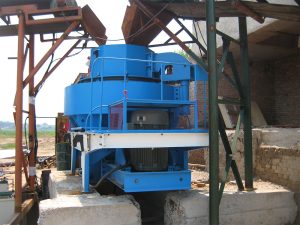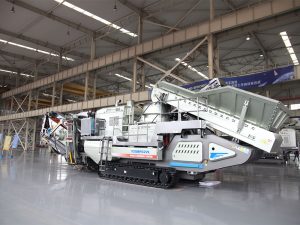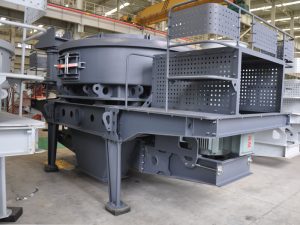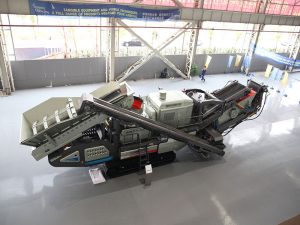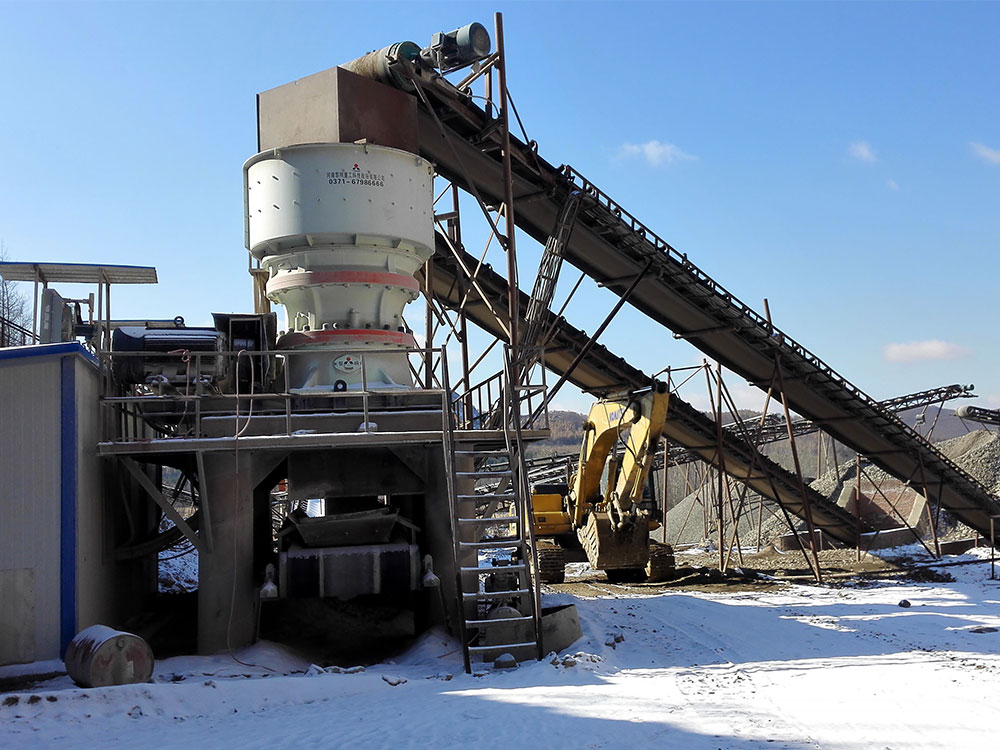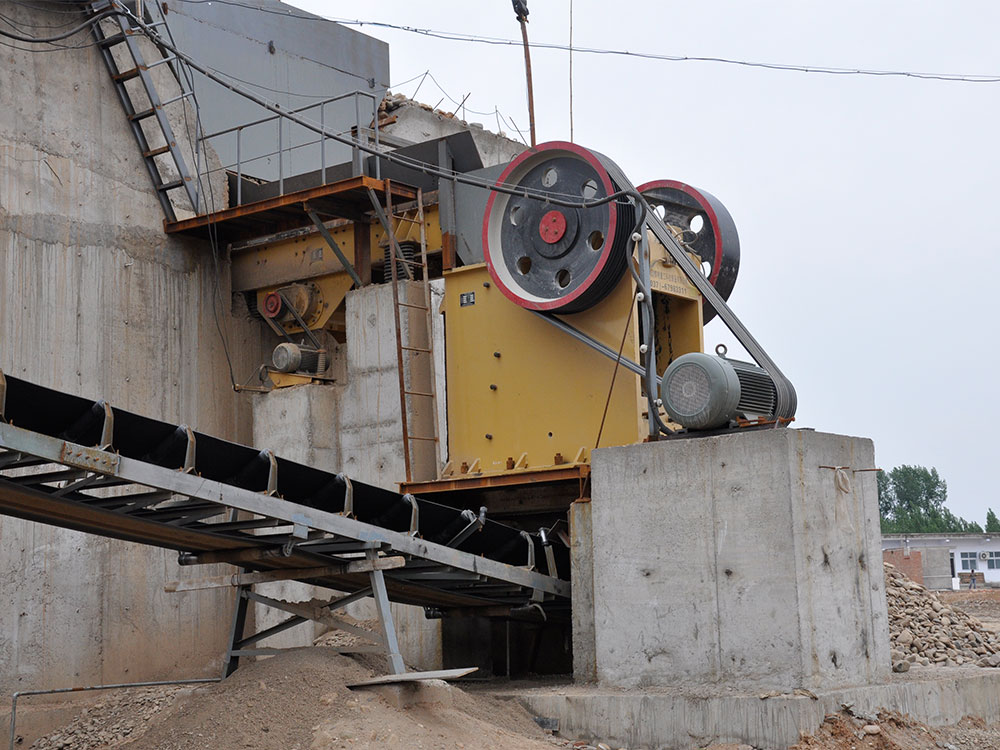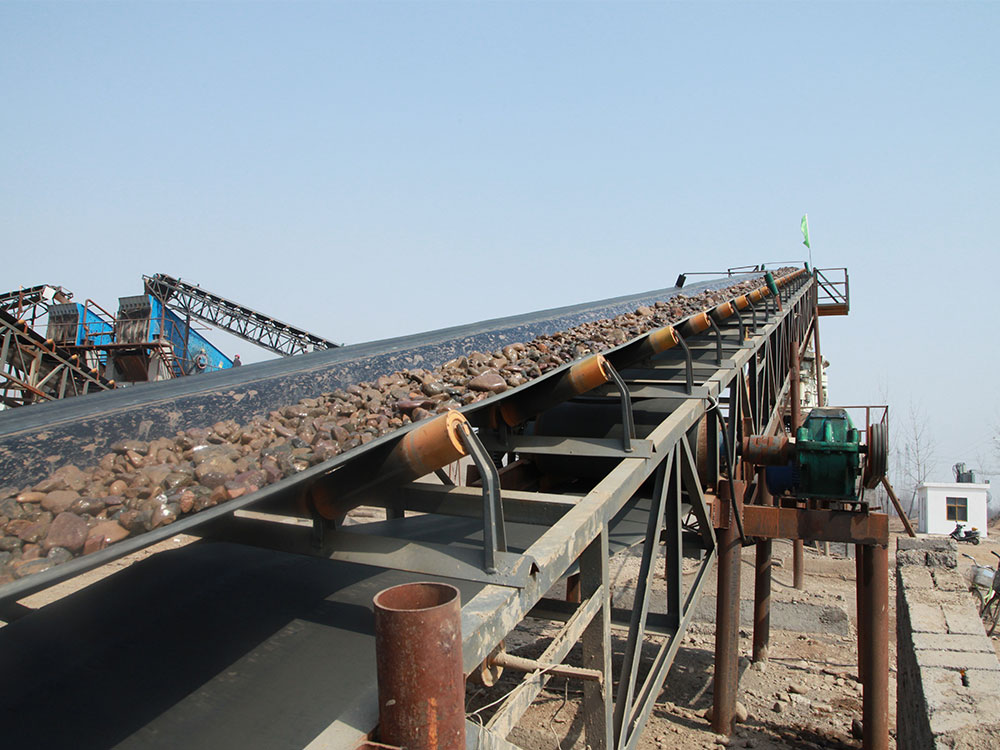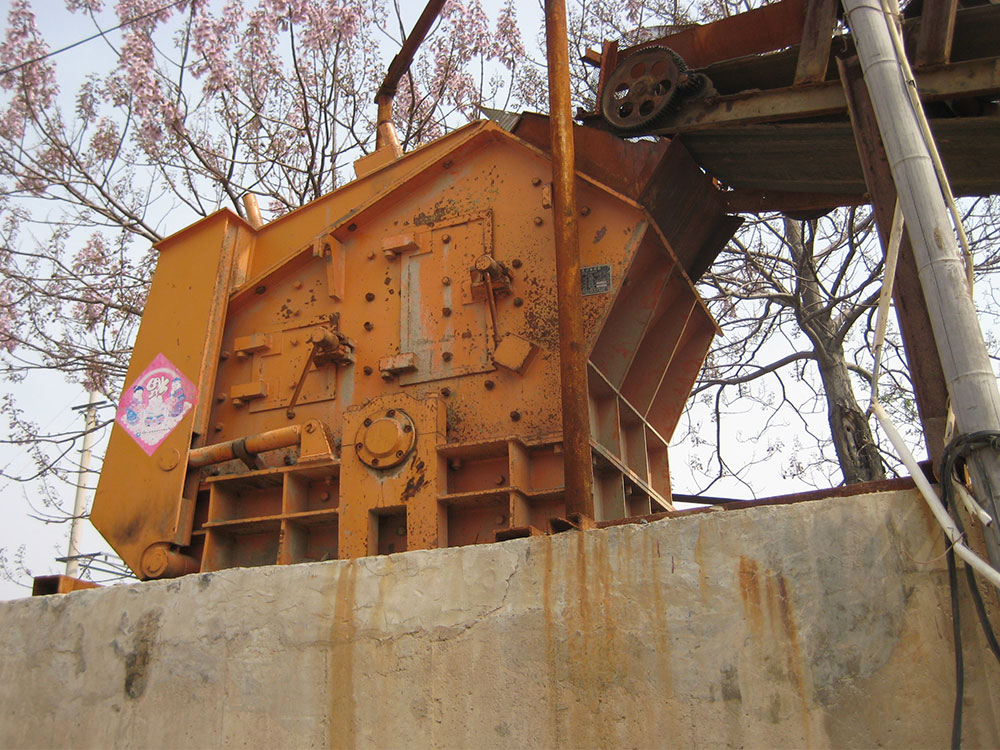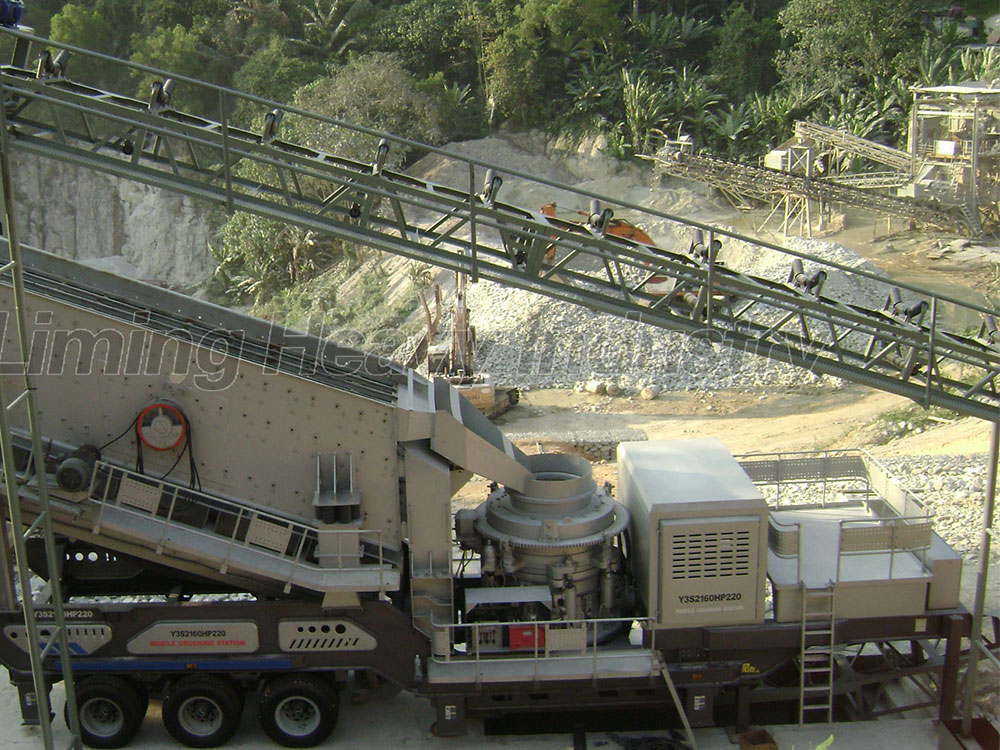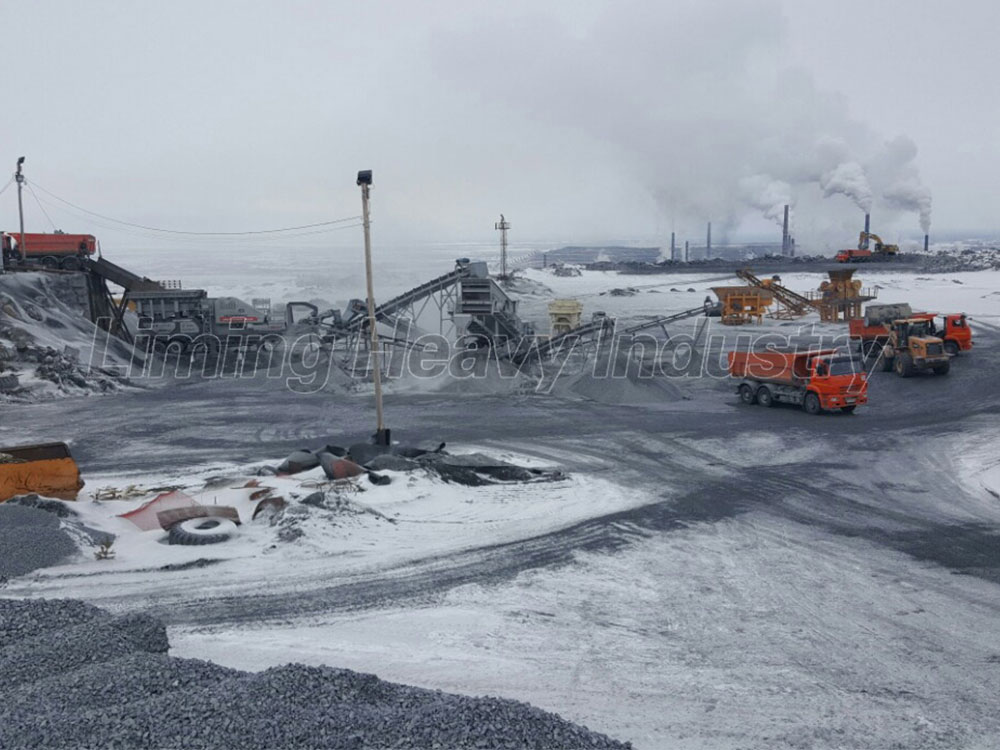To meet the demand for crushing 20cm basalt raw material for sand production, we have to consider the unique physical properties of basalt - its high hardness and abrasion resistance, which pose a serious challenge to the selection of crushing equipment. In order to ensure that the final sand and gravel aggregate not only has uniform particle size, but also meets the excellent standards of particle size, efficient and multi-stage crushing process has become the core of our design. The following is a well-designed configuration based on a typical production line flow, designed to meet the high demands of basalt crushing and sand making.
Core Equipment Layout
Coarse Crushing Stage
At this stage, we recommend the use of a jaw crusher, specifically the C6X model, to cope with large basalt raw materials of up to 20 cm. The C6X jaw crusher is known for its extra-large crushing ratios and excellent stability, and is capable of crushing raw materials down to a medium-sized granule size of around 10-30 cm in a single pass. This equipment not only has high crushing efficiency, but also has a long service life of wear parts, which makes it ideal for processing high hardness basalt.
Medium and fine crushing stage
To further improve the crushing efficiency and the quality of the finished product, we configured two sections of cone crusher to share the crushing task. The first section adopts single-cylinder hydraulic cone crusher (e.g. HST type), while the second section adopts multi-cylinder hydraulic cone crusher (e.g. HPT type). Both of them adopt advanced laminar crushing principle, which not only can greatly improve crushing efficiency, but also can effectively prevent equipment overload and ensure stable operation of the production line. In addition, the opening size of the adjusting ring of the cone crusher can be flexibly adjusted according to the needs, in order to adapt to the crushing needs of materials with different grain sizes.
Sand Shaping Stage
In the sand shaping stage, we chose the Vertical Shaft Impact Crusher (e.g., VS6X model), which further improves the finished product's particle size by throwing the material to the impact plate for impact crushing through the high-speed rotor. In order to obtain more rounded and consistent quality mechanism sand, we can also consider combining the rod mill combined process for fine treatment. The rod mill further grinds and shapes the material through the rolling and squeezing action of the rod media.
Screening and auxiliary equipment
In order to ensure that the materials can be graded and screened according to the particle size, we use vibrating screens (such as the S5X model). This equipment has the advantages of high screening efficiency, low noise and easy maintenance. Meanwhile, the vibrating feeder is responsible for feeding the raw materials into the production line in a uniform and continuous manner to ensure a stable and controllable feeding amount to the crusher.
Production Line Flow and Layout
Raw Material Processing
The raw material processing link starts from the vibrating feeder, which feeds 20cm basalt raw materials evenly into the jaw crushing plant for rough crushing. By adjusting the amplitude and frequency of the vibrating feeder, we can precisely control the feeding amount to ensure the crushing efficiency of the crusher and the quality of the finished products.
Medium and fine crushing link
After coarse crushing, the material enters the medium crushing workshop via conveyor belt, and is processed step by step by two sections of cone crusher. This step-by-step processing can reduce the load of a single machine and prolong the service life of the equipment. Meanwhile, the hydraulic system of the cone crusher can monitor and adjust the working pressure of the equipment in real time to ensure the stability and safety of the crushing process.
Sand Making and Screening
After medium crushing, the material enters the sand making workshop for shaping treatment, and then passes through the screening workshop to check the particle size. Unqualified materials will be returned to the crushing process for re-processing, while qualified finished aggregates will be sent to the stockpiling area through the conveyor belt. The vibrating screen in the screening workshop can adjust the screen aperture size according to the need, in order to adapt to the screening needs of different size of aggregates.
KEY TECHNICAL FEATURES
Four-stage crushing process
Through the professional division of work among four stages, namely coarse crushing, medium crushing, fine crushing and shaping, we can significantly improve the crushing efficiency and yield rate. This four-stage crushing process is not only suitable for hard rock processing, but also ensures that the final aggregate is of uniform size and shape.
Synergistic optimization of equipment
The use of cone crushers in conjunction with impact crushers can make up for the lack of throughput of a single piece of equipment. The cone crusher crushes the material to a smaller size, while the impact crusher further shapes and improves the grain size. At the same time, the hydraulic system ensures the stability of the plant and adapts to the high hardness of the basalt. This synergistic optimization of equipment can significantly improve the overall performance and efficiency of the production line.
Flexible Adjustment of Production Capacity
In order to meet the needs of different customers and the actual production situation, we can flexibly configure the scale of the production line according to the actual demand. For example, for 650 tons per hour, we can adopt the combination of Jaw + Double Cone + Impact Crusher to ensure continuous high production. At the same time, we can also adjust the parameters of the equipment according to the hardness and particle size distribution of the raw materials to achieve the best production results.
Finished Products and Maintenance
The final aggregate size range obtained covers 0-265mm, which is in full compliance with the standard of construction sand. These aggregates not only have uniform particle size and excellent grain shape, but also have high strength and abrasion resistance, which can meet the needs of various construction projects. In order to ensure the long-term stable operation of the production line and extend the service life of the equipment, we need to carry out regular equipment maintenance. For example, monitoring and adjusting the load of the impact crusher, replacing the wear-resistant parts that are badly worn, etc. Such maintenance work not only improves the reliability and stability of the equipment, but also reduces production costs and maintenance expenses.
This configuration based on the typical production line flow design takes full account of the high hardness and wear-resistant characteristics of basalt, and ensures that the final sand and gravel aggregates obtained are of uniform particle size and excellent grain shape through the highly efficient, multi-stage crushing process and advanced equipment synergistic optimization technology. At the same time, we also pay attention to the flexibility and maintainability of the production line to meet the needs of different customers and the actual production situation.


